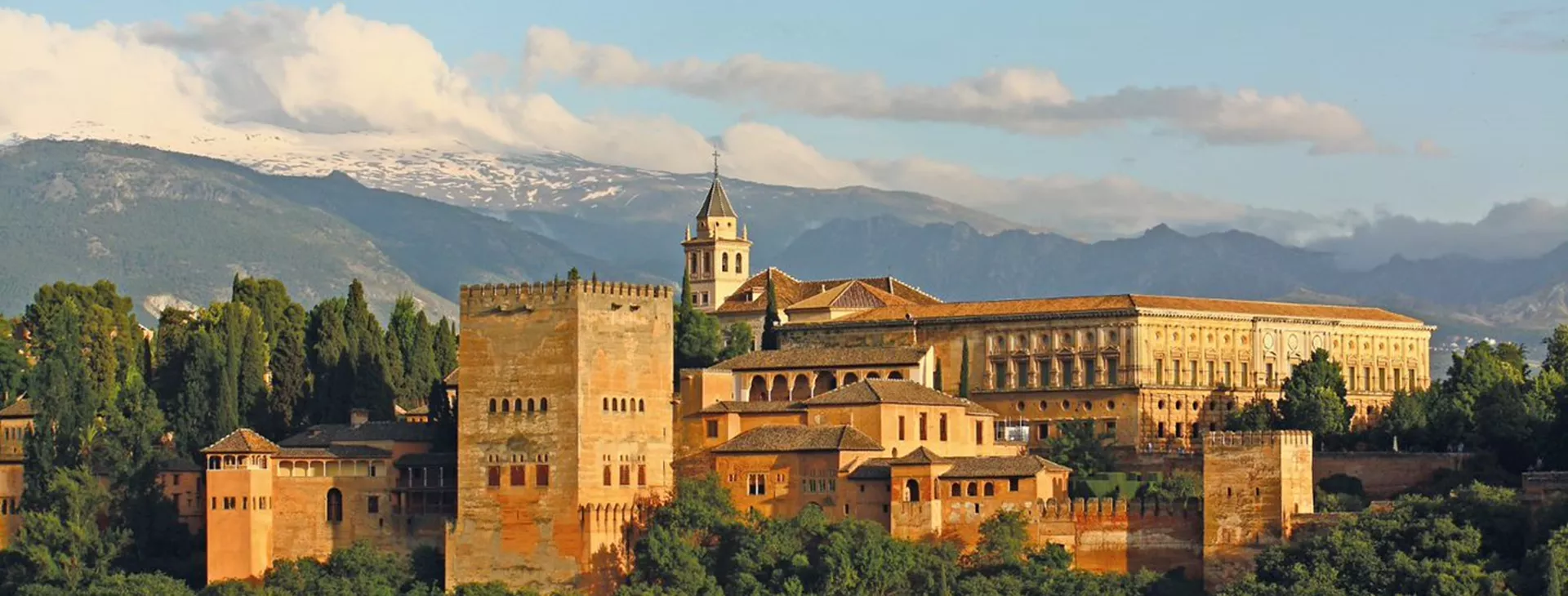
United States
© Luxury Gold 2025. All Rights Reserved.
MAKE TRAVEL MATTER® is a trademark of The TreadRight Foundation, registered in the U.S. and other countries and regions, and is being used under license.
Experience Portugal like never before with our small group tours and dedicated Travel Concierge.
13 DAYS
Experience the passion, creativity and romance of Spain and Portugal, as you witness fiery flamenco performances, marvel at Gaudi’s dreamy architecture and appreciate enchanting citrus-scented squares.
Proud to be Awarded Platinum Trusted Service Award by ![]()
"Exceptional!"
"The itinerary was wonderful that I would recommend an extra night if possible in Seville or Serpa Portugal. Our guide was exceptional!!!"
- Trusted Customer, Spain and Portugal in Style, June 2024
"Excellent!"
"Great sites, food, people, and traveling in comfortable buses. Knowledgeable tour director. Accommodations were excellent! Right amount of free time to explore on our own or to just chill out with gelato. This was our second Luxury Gold tour. We will definitely be looking at other tours!"
- Trusted Customer, Spain and Portugal in Style, July 2024
Must-see landmarks
Lisbon's Belem Quarter is historically significant, with numerous key landmarks located here, by the Tagus River. Once the noteworthy residence of Portugal's elite, Belem is where you can see the Monument to the Discoveries - a striking tribute to the almighty Henry the Navigator, with limestone sculptures and a pretty mosaic compass and world map, representing journeys taken by noteworthy explorers. The UNESCO World Heritage Site Belem Tower was once relied on by sailors as the marker for safely reaching home shores and can now be enjoyed as an architectural masterpiece. This five-storey tower overlooks Jeronimo's Monastery - an intricately detailed complex, including maritime motifs and gargoyles among its impressive stonework. Venturing beyond Lisbon, the capital city Evora is a close second when it comes to national monuments.
Traditional cuisine
As a seafaring nation with many Mediterranean influences, good hearty seafood plays a dominant role in Portugal's authentic cuisine. Cod is the most frequently used fish and can be cooked and served in multiple ways - over 365 ways the locals will tell you - with bacalhau (dried, salted cod) arguably being the most important national dish. Pork is the meat of choice, and features in unexpected places, including some desserts. Like cod, it is prepared and cooked in many different ways, from fine, dry-cured hams to roasted suckling pig. Pork is also a common ingredient in Portugal's extensive variety of sausages (enchidos) but not the only meat used; chicken, duck, veal, rabbit and even bacalhau can be found in some sausages. Another well-known dish is cosido, a delicious meat and vegetables stew based on pork meat.
Soups and stews also have a firm place in Portuguese dining. The rustic soup caldo verde (literally meaning green broth) is a treasured dish, simply comprised of just potato, onion, olive oil, kale and chouriço (chorizo pork sausage). Bread and wine form a base staple that can be expected to accompany most main meals. The Portuguese artistically express their zesty passion for life by using fiery spices and strong flavors in their cooking, with piri piri being a popular choice. Dessert-lovers will have a wonderful time sampling Portuguese sweet treats in the form of hundreds of different kinds of pastries, egg custard tarts, and desserts made with nuts, cinnamon and citrus flavors. Thought is even given to snacks (petiscos) in this beautiful country; enjoying these tasty nibbles is a cultural practice that numerous taverns offer as a speciality.
Traditional beverages
Portugal boasts an impressive local beverage selection. Most famous for its Port Wine, originating centuries ago when sailors combined wine with brandy to ensure its longevity at sea, this sweet-tasting dessert wine is a big hit with locals and visitors alike. Vinho Verde or Green Wine is a refreshing sparkling wine that needs to be served ice cold for the best experience. It isn't actually colored green as its name suggests; it comes in the standard red, white or rosé varieties but green denotes it being a young wine. If liqueurs are your preferred tipple, the Ginjinha or Ginja is likely to be something you'll enjoy. This infusion of ginja berries (sour cherries), sugar and alcohol can be drank from a shot glass lined with fruit in the bottom, or from a chocolate shot glass that can be eaten after drinking the liqueur. For a soft drink in the sunshine, try Portuguese lemonade - a tangy concoction of peri peri, pepper, lemons, honey, minced cilantro and seltzer water.
Landscape and wildlife
Depending on your location within Portugal, you will experience a spectacular array of landscapes, with everything from the inviting golden beaches along its coastline, to the rural grass plains of Alentejo, together with cornfields, and cork oak and pine forests. Nine volcanic islands make up The Azores - each one lush with green vegetation and offering its own unique wonders. The second largest is the island of Pico, featuring the glorious Volcano of Pico. Meanwhile, in the capital city of Lisbon, rolling hills, regal castles and strikingly beautiful cathedrals are all part of the view.
Wolves, red foxes, weasels, polecats, martens, badgers, mongooses, wild boars, deer, geckoes, salamanders, terrapins, chameleons, snakes and a variety of bat breeds can all be found in Portugal. In terms of aquatic life, the warm waters of the Algarve create an attractive environment for sea turtles, dolphins, porpoises and different types of whales, including minke whales and long-finned pilot whales. Woodpeckers, geese, owls, cuckoos, sparrowhawks, kites, kestrels, eagles, herons and egrets are just some of the birds you might come across on your travels.
On Luxury Gold tours, your Travel Concierge is fluent in the local language and culture. Before you go, here is more information about Portugal.
SPRING
MAR-MAY
avg. temp:
17˚C / 63˚F
SUMMER
JUN-SEP
avg. temp:
23˚C / 73˚F
AUTUMN
OCT-NOV
avg. temp:
21˚C / 70˚F
WINTER
DEC-FEB
avg. temp:
12˚C / 54˚F
